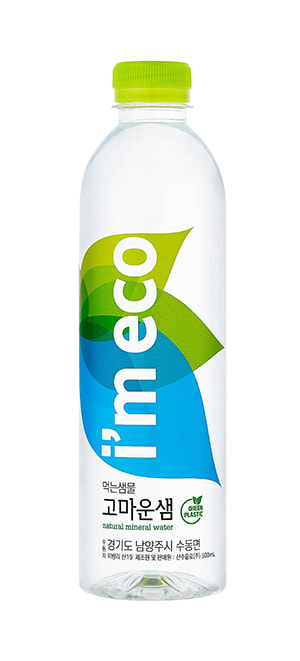
China has embarked on a road towards a “dual carbon” target where it commits to reach its carbon peak by 2030 and move forward to achieve carbon neutrality by 2060. As the world raised concerns over climate change, countries are exerting efforts and directing resources to curb carbon and greenhouse gas emissions. Having the world’s biggest industrial production, China’s role in meeting its “dual carbon” goal is crucial and its commitment has been well received around the world.
To reach its “dual carbon” goal, China has introduced policies encouraging technological innovations that are aimed at encouraging smart production, utilizing renewable energy, increasing recycling and usage of bio-based and recycled materials. More investments have also been directed towards “green manufacturing” projects as green manufacturing is one of the strategic objectives under the ‘Made in China 2025’ plan. The government has also been supporting some industries that have shifted to products that contribute to reduction in carbon emission, such as the production of new energy vehicles (NEV) like electric vehicles.
Plastics manufacturing at a turning point
China’s plastics manufacturing operations are largely dependent on fossil fuels, hence carbon emissions from these plants remain high. A report from the WWF Global states that in 2021, researchers estimate that the production and incineration of plastics will amount to over 850 million tons of greenhouse gases into the atmosphere. As plastics factories resume their production following the pandemic, emissions from these factories have surged.
But the commitment of the plastics industry has not waned and will continue to inspire innovations and development of state-of-the-art technologies to reduce their carbon footprints. Given that each stage of plastics production produces greenhouse gas emissions that affects the environment, a growing number of companies in the plastics industry are taking urgent steps to reduce their carbon footprint, either through the use of more efficient and smarter production process, shift towards renewable energy such as solar energy to power their plants, plastics recycling and re-use of recycled materials as inputs.
Leading global companies are supporting China’s goal to reduce carbon emissions. DSM Engineering Materials announced that it is accelerating its efforts to reduce its total greenhouse gas emissions (including Scope 1, 2, 3 upstream) and the carbon footprint of its products by 50% by 2030, from a 2016 baseline. In its drive towards 100% renewable electricity, DSM Engineering Materials plants in Europe and China are already fully powered by renewable electricity. In addition, DSM Engineering Materials has committed to developing and rolling out bio- and/or recycled-based alternatives for its entire portfolio by 2030; specific grades are already available for all major product lines.

DSM Engineering Materials accelerates its carbon footprint and greenhouse gas emission reduction program. (Image source: DSM)
SABIC has announced the successful implementation of another project under its TruCircle program to speed up its move towards a circular plastic economy. Allied Bakeries, a UK-based supplier of bakery products, has introduced bread bags made by St. Johns Packaging using SABIC’s certified circular polyethylene (PE) in the packaging of their Kingsmill No Crusts 50/50. Following the kick-off of the joint project in November 2020, the trial phase was completed in May 2021 at the St. Johns Packaging production site in China and Kingsmill introduced the bags made from PE film with certified circular polymers content. The bags are made by St. Johns Packaging using a PE resin grade from SABIC, and incorporate a 30% content of recycled feedstock from post-consumer waste.
A collaboration between Ineos Styrolution and travel luggage maker TuPlus enabled TuPlus to advance its efforts in reducing the carbon footprint of its products and promote more environment-conscious mode of travelling. Ineos Styrolution’s Terluran ECO GP-22 MR50, a fully recyclable ABS grade containing 50% of recycled post-consumer waste electrical and electronic equipment (WEEE), is applied to produce TuPlus travel luggage.

A fully recyclable ABS grade containing 50% of recycled post-consumer waste electrical and electronic equipment (WEEE), developed by INEOS Styrolution, is applied to produce travel luggage (Image source: TUPLUS)
The contribution of Clariant to China's carbon neutrality goal is through its MegaMax catalyst series for CO2-based methanol production which aims to help China reach its carbon neutrality target. Capturing and converting CO2 emissions is a cornerstone of the technology roadmap for addressing climate change. Synthesizing methanol from CO2 is a particularly valuable approach because methanol forms a building block for thousands of chemical products such as plastics, paints, cosmetics, and fuels — including providing an energy storage carrier for hydrogen. With MegaMax catalyst, Clariant is able to help customers in China and around the world to considerably reduce carbon emissions, and achieve critical climate targets.

MegaMax series for CO2-based methanol production. (Image source: Clariant)
As a bio-based material, polylactic acid (PLA) is seen as an alternative that offers reduced carbon footprint. One example is the Luminy® PLA portfolio that Total Corbion PLA presented at Chinaplas 2021 which also displayed a number of partner applications for this material. Luminy® PLA portfolio includes both high heat and standard PLA grades and is used in a wide range of markets from packaging to durable consumer goods and electronics.

Sansu is one of the first PLA customers to offer reprocessed PLA waste to Total Corbion (Image source: Total Corbion PLA)
At Chinaplas 2022, the highly efficient machines, recycling technologies and other production techniques that will help plastics manufacturers achieve their goals of reducing their carbon emissions are among the highlights. On-floor demonstrations of well-known Chinese and overseas exhibitors, and consultations with technical experts will further help visitors as they explore viable options.



